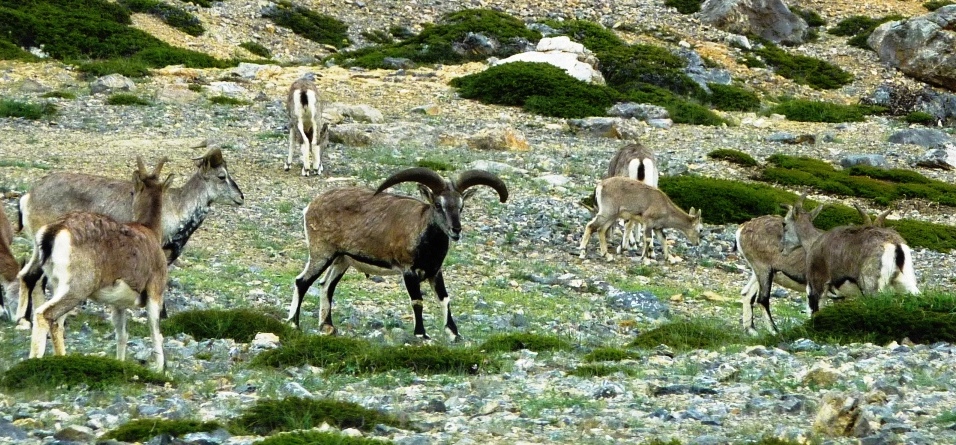 Kaza: The Himalayan blue sheep or bharal, an important prey of the endangered snow leopard, is under threat in the wild from a highly contagious viral infection in the Spiti Valley, the state’s northernmost part that runs parallel to the Tibetan border.
Kaza: The Himalayan blue sheep or bharal, an important prey of the endangered snow leopard, is under threat in the wild from a highly contagious viral infection in the Spiti Valley, the state’s northernmost part that runs parallel to the Tibetan border.
Wildlife officials say a large number of blue sheep have been reported to be suffering from foot-and-mouth disease.
“A large number of blue sheep suffering from the disease were spotted in the Demul (village) area,” Divisional Forest Officer (Wildlife) Rajeev Kumar said.
Kumar told on the telephone from Kaza town that local sheep and goat breeders have reported the spread of the disease to the wildlife wing.
Foot-and-mouth is an acute contagious disease of cloven-footed animals marked by ulcers in the mouth and around the hoofs.
Kumar said even camera traps (automatic cameras) laid by the wildlife department in coordination with Mysore-based NGO Nature Conservation Foundation in the Spiti Valley to study the habitat of snow leopard have recorded the infected animals.
“Since the domesticated goats and sheep share the grazing grounds with wild animals, there are chances that the blue sheep acquired the disease from the domesticated ones,” he said.
A wildlife team has been dispatched to gauge the extent of the disease. The local animal husbandry authorities have been told to treat the domesticated animals in case the infection spreads, the wildlife official added.
Migratory shepherds, who are returning to the lower pasture lands owing to the onset of winter, have also spotted carcasses of the blue sheep, the species listed as least concern by IUCN (International Union for Conservation of Nature), another official said.
The blue sheep, which inhabit open grassy slopes in high mountains from 2,500 to 5,500 meters, often migrate between India and China’s Tibetan plateau.
According to wildlife experts, the rise in the population of domesticated animals in the remote, inaccessible mountains can pose a threat to the wild animals.
“This might even threaten the Asiatic ibex – a wild goat species – another prey of the snow leopard prominently found in Spiti,” an expert said.
Sandeep Rattan, a veterinary surgeon with the wildlife wing, said intermingling of domesticated and wild animals are mainly responsible for the spread of the foot-and-mouth disease. Its agent may also be carried by the wind from an infected farm.
“It’s not possible to vaccinate the animals in the wild, especially where their habitat is rocky and cliffy. Recovery in the wild is automatic provided the secondary bacterial infection doesn’t complicate the disease,” he said.
The snow leopard, bharal, ibex, musk deer, mouse hare, long-tailed marmot and wild ass are prominent mammal species found in the alpine and cold desert regions of Spiti.
–IANS
The opinions, beliefs and viewpoints expressed by authors, news service providers on this page do not necessarily reflect the opinions, beliefs and viewpoints of Hill Post. Any views or opinions are not intended to malign any religion, ethnic group, club, organization, company, or individual.
Hill Post makes no representations as to the accuracy or completeness of any information on this site page.

